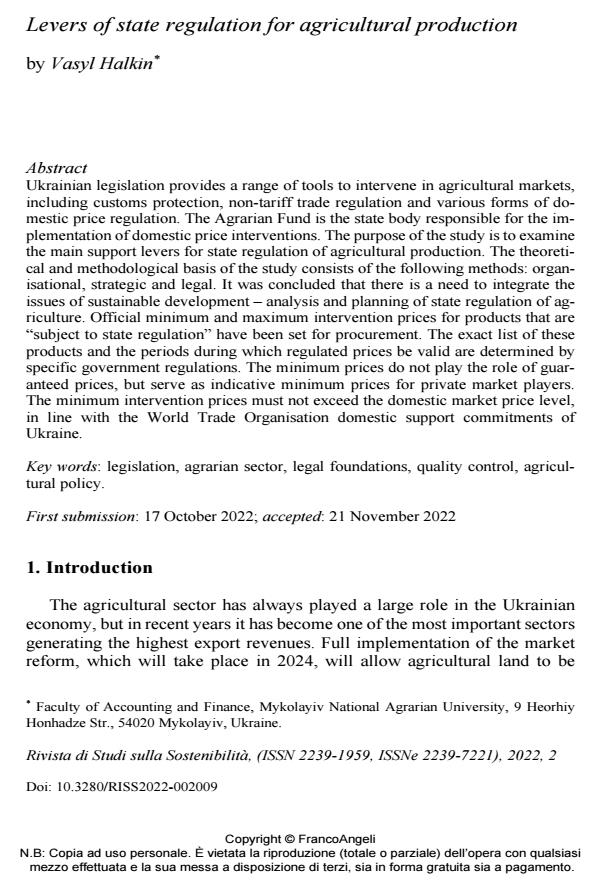Levers of state regulation for agricultural production
Journal title RIVISTA DI STUDI SULLA SOSTENIBILITA'
Author/s Vasyl Halkin
Publishing Year 2023 Issue 2022/2
Language English Pages 18 P. 125-142 File size 126 KB
DOI 10.3280/RISS2022-002009
DOI is like a bar code for intellectual property: to have more infomation
click here
Below, you can see the article first page
If you want to buy this article in PDF format, you can do it, following the instructions to buy download credits

FrancoAngeli is member of Publishers International Linking Association, Inc (PILA), a not-for-profit association which run the CrossRef service enabling links to and from online scholarly content.
Ukrainian legislation provides a range of tools to intervene in agricultural markets, including customs protection, non-tariff trade regulation and various forms of domestic price regulation. The Agrarian Fund is the state body responsible for the implementation of domestic price interventions. The purpose of the study is to ex-amine the main support levers for state regulation of agricultural production. The theoretical and methodological basis of the study consists of the following meth-ods: organisational, strategic and legal. It was concluded that there is a need to in-tegrate the issues of sustainable development - analysis and planning of state reg-ulation of agriculture. Official minimum and maximum intervention prices for products that are "subject to state regulation" have been set for procurement. The exact list of these products and the periods during which regulated prices be valid are determined by specific government regulations. The minimum prices do not play the role of guaranteed prices, but serve as indicative minimum prices for pri-vate market players. The minimum intervention prices must not exceed the do-mestic market price level, in line with the World Trade Organisation domestic sup-port commitments of Ukraine.
Keywords: legislation, agrarian sector, legal foundations, quality control, agricultural policy.
Vasyl Halkin, Levers of state regulation for agricultural production in "RIVISTA DI STUDI SULLA SOSTENIBILITA'" 2/2022, pp 125-142, DOI: 10.3280/RISS2022-002009